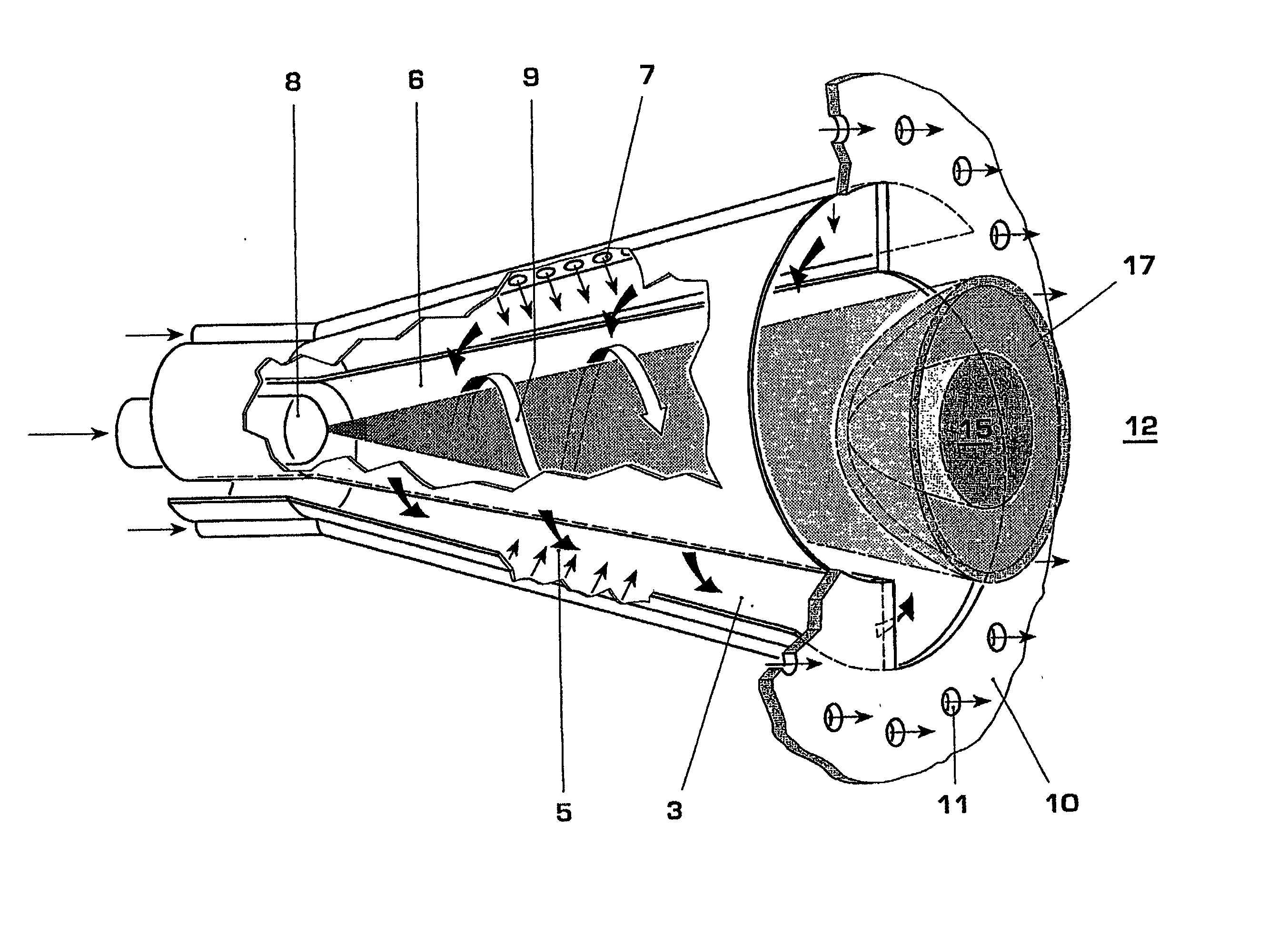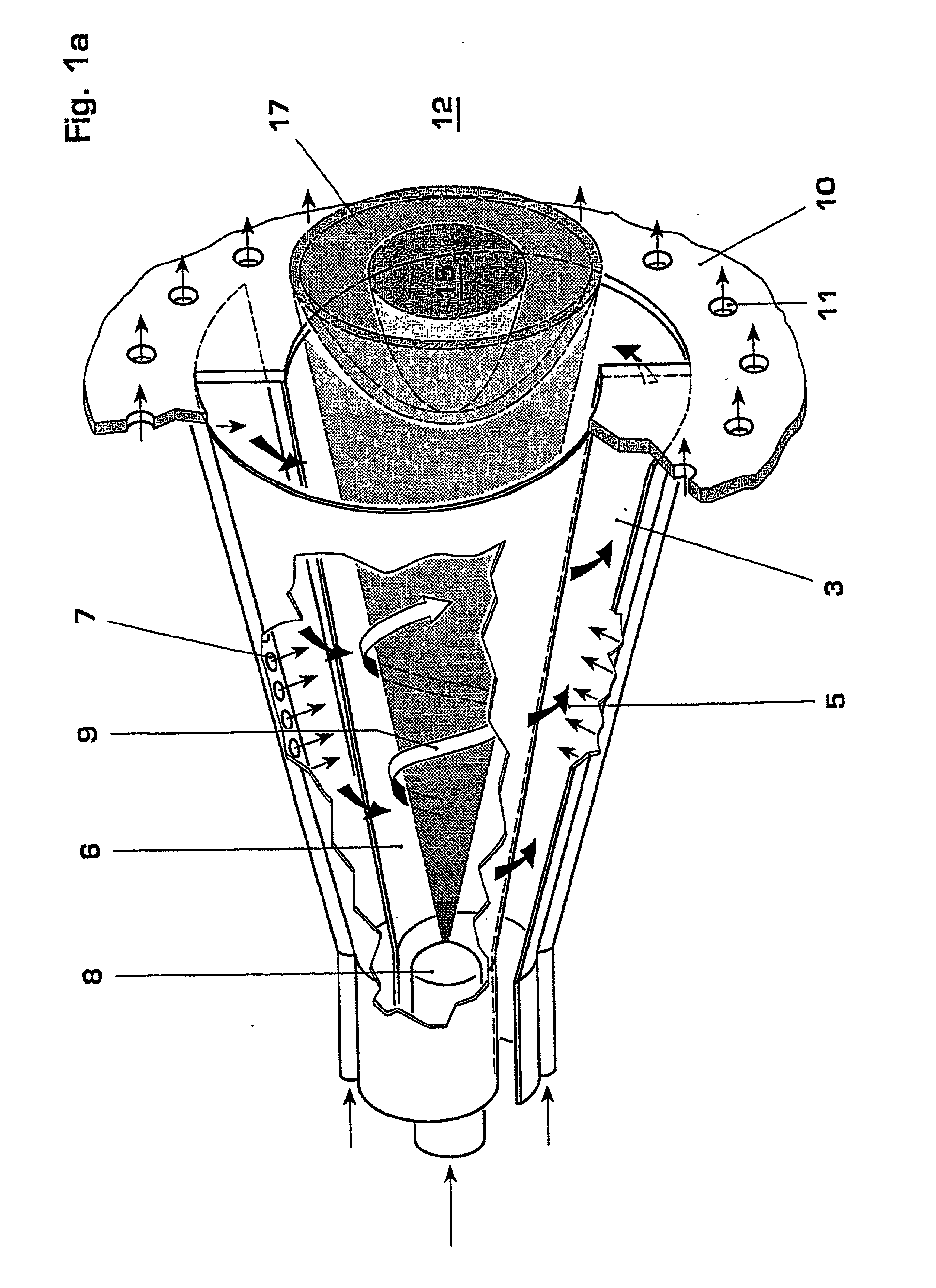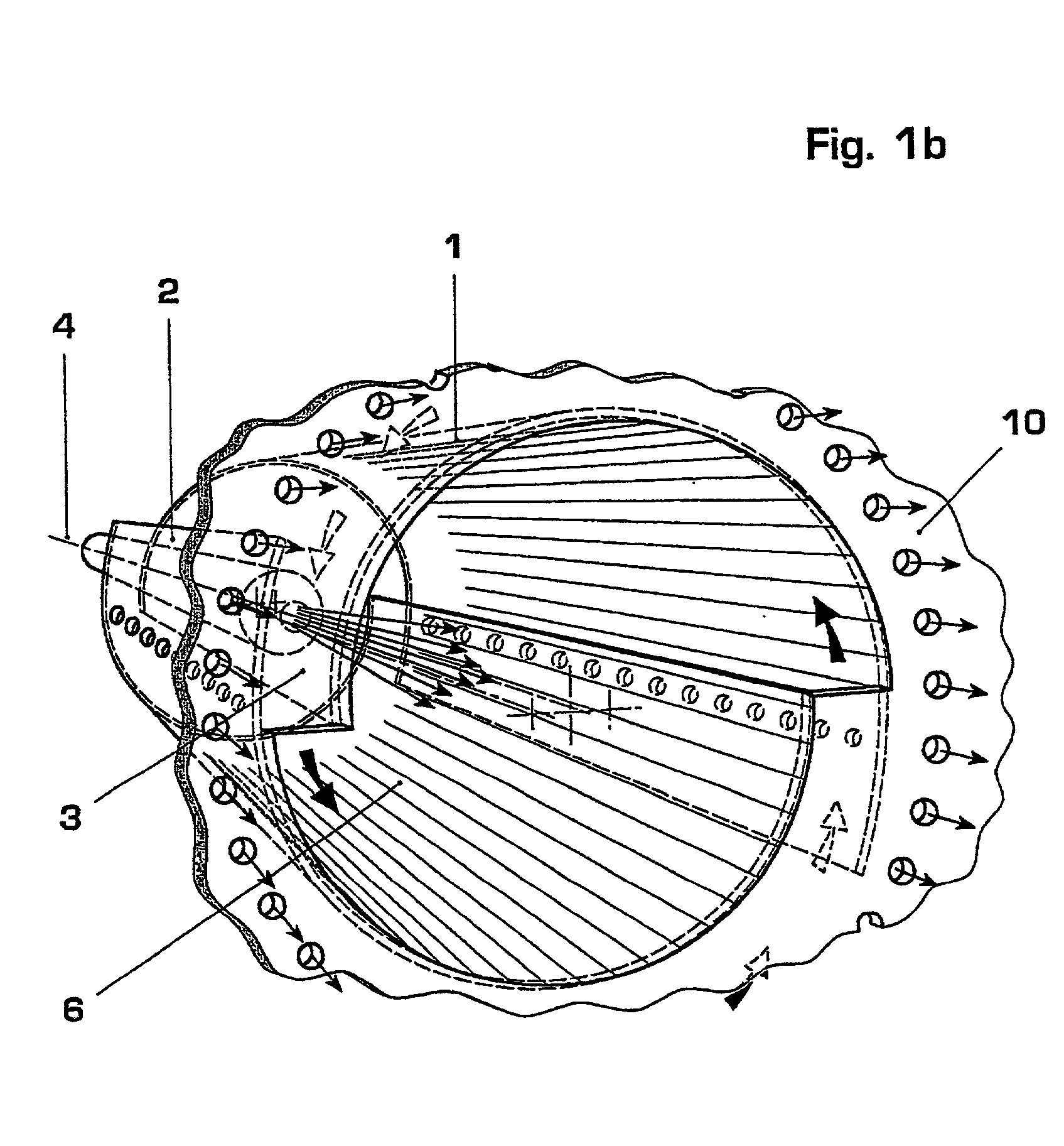Method for increasing the fluid-mechanical stability of a premix burner as well as a premix burner for performing the method
a technology of premix burner and fluid-mechanical stability, which is applied in the direction of machines/engines, combustion types, lighting and heating apparatus, etc., can solve the problems of extinction of flames within combustor, increased no.sub, and frequent thermal oscillation in combustors
- Summary
- Abstract
- Description
- Claims
- Application Information
AI Technical Summary
Benefits of technology
Problems solved by technology
Method used
Image
Examples
Embodiment Construction
[0010] The invention is based on the objective of creating a method for increasing the fluidic stability of a premix burner, which efficiently and without further energy consumption suppresses the undesired flow eddies that form as coherent pressure fluctuation structures. The measures necessary on a premix burner for this purpose should be simple to construct and cheap to realize. The measures used also should be completely maintenance-free.
[0011] According to the invention, the objective is realized with a method for increasing the fluidic stability of a premix burner as well as with a premix burner of the type mentioned in the independent claims. Characteristics that constitute advantageous further development of the concept of the invention are described in the dependent claims and the specification, as well as in the exemplary embodiments.
[0012] The method according to the invention is based on the basic idea of--for the fluid-mechanical stabilization of a premix burner, into w...
PUM
 Login to View More
Login to View More Abstract
Description
Claims
Application Information
 Login to View More
Login to View More - R&D
- Intellectual Property
- Life Sciences
- Materials
- Tech Scout
- Unparalleled Data Quality
- Higher Quality Content
- 60% Fewer Hallucinations
Browse by: Latest US Patents, China's latest patents, Technical Efficacy Thesaurus, Application Domain, Technology Topic, Popular Technical Reports.
© 2025 PatSnap. All rights reserved.Legal|Privacy policy|Modern Slavery Act Transparency Statement|Sitemap|About US| Contact US: help@patsnap.com



